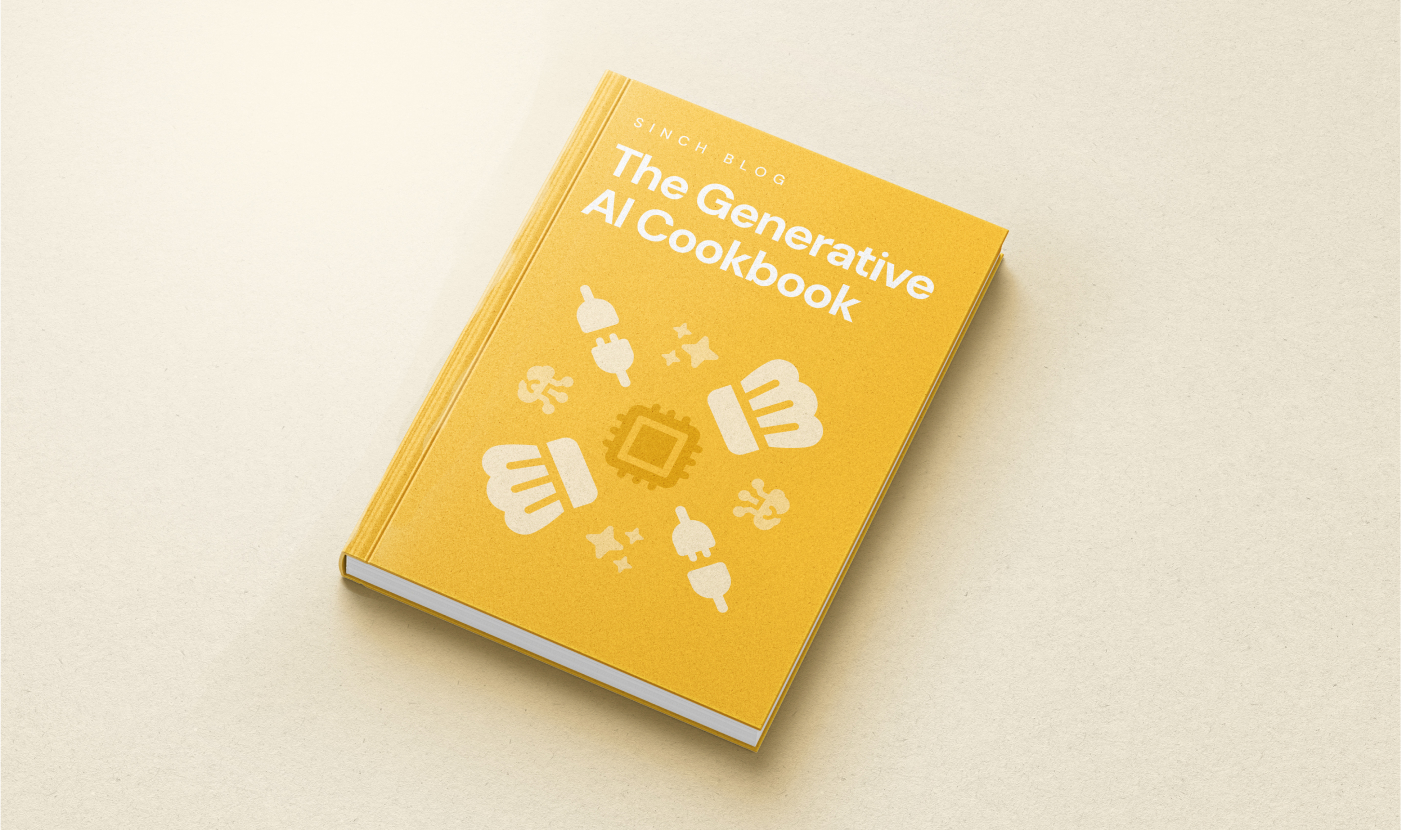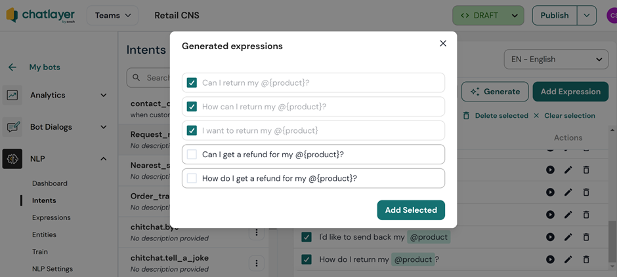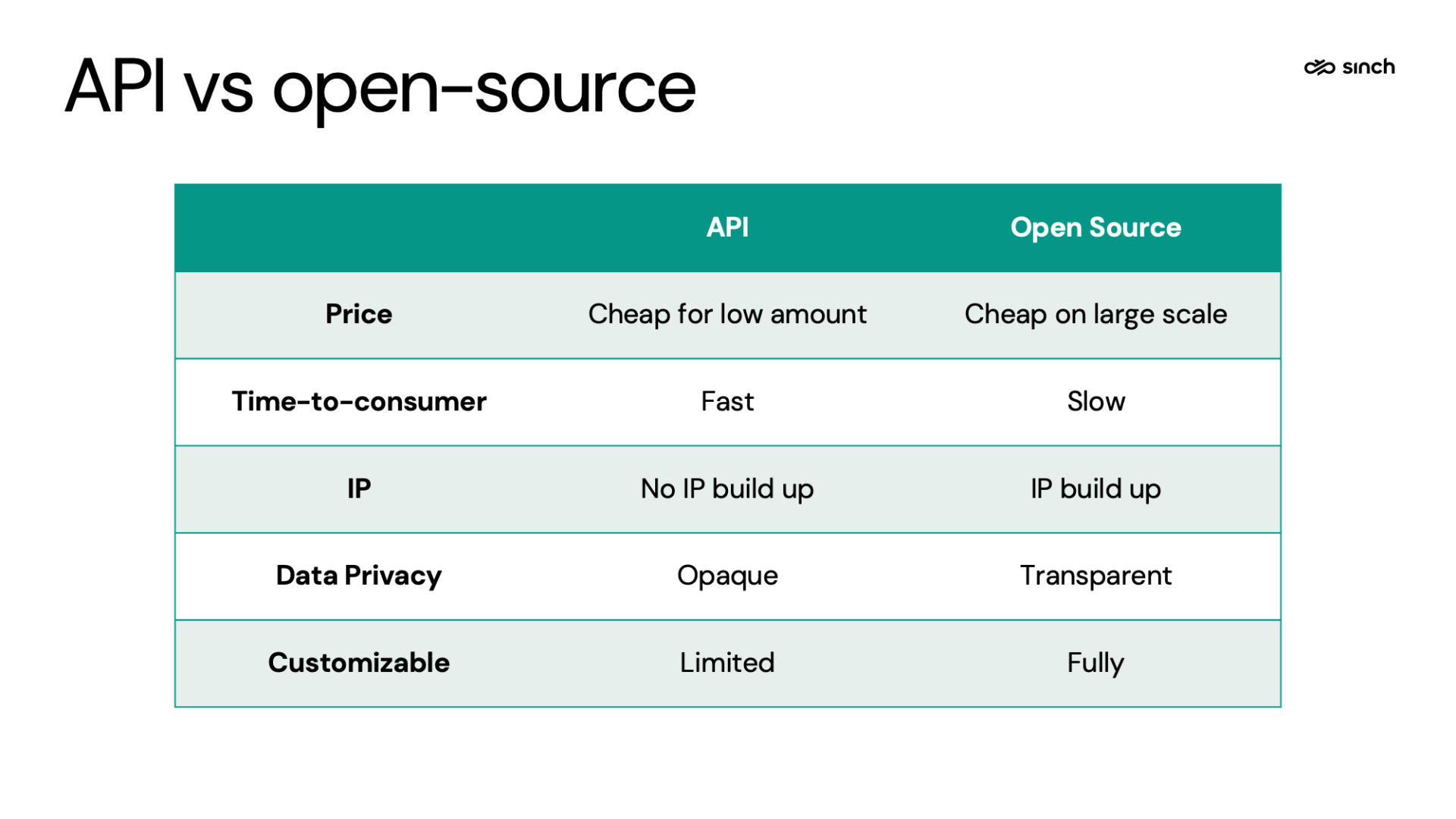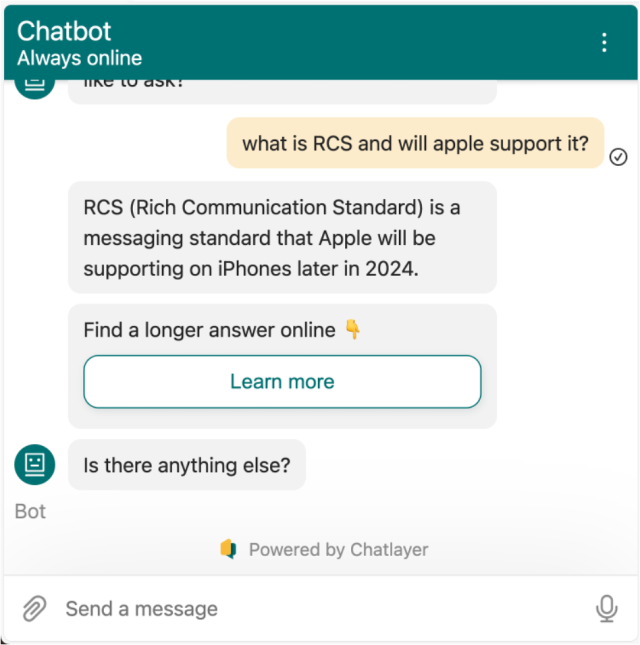Insights
Lessons learned from one year of generative AI

Insights

By Joachim Jonkers, Director of Product – Conversational AI at Sinch
In November 2022, the release of ChatGPT completely changed how the public thinks about how AI can generate language.
While AI isn’t a new concept, ChatGPT marked a pivotal shift. Unlike predictive AI, which operates with more constrained parameters, generative AI models like ChatGPT learn data patterns and structure to generate new content like text, images, or other media.
This technology offers immense potential for enterprises. However, responsible AI implementation requires transparency, fairness, and accountability.
In 2023, Sinch kicked off several generative AI projects. Here, I’ll share some of our key learnings, serving as a practical guide (or “cookbook,” as we’ve called it) for enterprises to integrate AI into their product and customer engagement strategies.
In 2023, our focus at Sinch was experimenting with how various applications of generative AI could help organizations of all sizes. We found that it could improve customer interactions and make operations smoother for our customers – but we know there’s still so much more to discover, and we’re excited about what’s next.
In short, we’ve learned so much! That’s why we made the Generative AI Cookbook—a simple, six-step recipe to help other companies successfully launch their own generative AI tools.
This infographic has high-level learnings for enterprises to use as a reference, with full explanations for each section down below. Let’s dive in!

Exploring where you might be able to use AI in your business first requires a clear understanding of where it can add value. Some prime examples of suitable use cases can include:
With any of these use cases, it’s important to ensure that you have some guardrails in place to ensure generated output meets your expectations. This can involve using some sort of automated controls or having human oversight. Having clear processes and goals, along with using good data quality, will greatly improve the effectiveness of your AI solutions.
For example, one use case we explored in 2023 was using AI to automate expression generation in customer communications. Traditionally, chatbot builders spend a considerable amount of time compiling examples of user queries so their chatbots can understand and interpret what users are saying. But by using AI, this process can become much more efficient.
In this solution, with just one click, enterprise users were able to create a comprehensive set of expressions and possible questions their customers could ask on a website, via WhatsApp, via Instagram messages, and other channels. It was a productivity win because bots were equipped to handle a wide array of user interactions almost instantly, making bot building much faster.

This instance greatly enhanced productivity for our customers, but to make it happen, we had to also acknowledge the limitations of generative AI. These can include:
Once you’ve found the right use case, the next step will be figuring out how to put it into action.
Choosing the right generative AI provider is key when you’re first getting started. You can either use an API or build your own solution using open-source models.
Some examples of API-based models include:
Alternatively, open-source (self-hosted) options include:
Both API solutions and open-source ones have their pros and cons. APIs, like those from OpenAI, are cost-effective for testing ideas quickly without needing infrastructure. However, these API solutions are opaque with data privacy, and customization options can be limiting.
On the other hand, open-source models offer more control and flexibility. They’re great for handling a lot of requests, but that might not be what you need when you first start out. Plus, they will require more investment and setup to get going.
My advice? Start with an API for quick experiments. Later, you can explore self-deployed, open-source models as your project grows.

Introducing generative AI or any new technology will require you to address legal and data privacy concerns. This involves three key aspects: regulation, transparency, and opt-in.
First, stay updated on regulations like the EU AI Act and consider existing legislation like the GDPR. You’ll need to consider regulations across markets and use cases – for example, you’ll need to follow GDPR procedures when integrating new AI-related sub-processors.
Second, you’ll need to maintain transparency with customers. Clearly communicate the presence of AI features in products, provide information about how you’re using their data, and ensure customers know who processes their data.
Third, you’ll need to implement opt-in mechanisms. Customers need to explicitly consent to signing up to using generative AI.
In 2023, we successfully incorporated legal regulations like GDPR into our WhatsApp newsletter template generation tool in Sinch Engage. This AI tool helps an enterprise simplify campaign messaging, asking users to create a description of the campaign they wanted to run and include if they want to use emojis, what their preferred tone of voice and language was, etc. And then, based on that, the tool creates a really engaging message that a business could send their WhatsApp subscribers.
Through the whole process, customers know have consented to interacting with AI, so they can provide a human touch to the campaign after AI has done a first pass.
You want to make sure you set a standard for yourself and your business when it comes to legality – and, of course, the same can be said about design.
Next let’s talk about the customer experience. You’ll want to make sure that a customer’s experience across different products is visually similar and will signal to them that they’re using an AI tool.
This means creating a visually cohesive design strategy for AI that encompasses color schemes, typography, and other elements. Additionally, you can incorporate subtle visual cues like AI-related icons or graphics to help users recognize AI features. This is key to making sure that the customer experience when it comes to AI-enabled features is as simple and straightforward as it can possibly be.
As an example, take a look at our Knowledge Base AI tool. Users can upload existing content, like FAQs or product descriptions, which are used to create a powerful bot that can respond to customer queries accurately. The bot can be customized with colors and icons as well so that a user always knows they’re interacting with a brand’s AI assistant.

And to mitigate the risk of this Generative AI technology veering off track, we built guardrails to make sure that the AI chatbot’s responses remained relevant and only gives answers based on the existing content users upload. This not only helps with accuracy – but makes sure that brands can offer consistently great customer experiences, especially when customers are interacting with their bots.
Now that you’ve done a lot of the preparation work, it’s time to build and launch your AI solution. This step involves using your research to develop your AI model, integrate it into your existing systems or products, and ensure it meets all your requirements. Once everything is in place, it’s time to launch!
One standout launch for us was in collaboration with Mailjet by Sinch. We focused on optimizing email generation processes to create the Mailjet AI Copy Generator. This AI tool simplifies email creation, letting users customize length, content, and use case.
Plus: with the assistance of AI, this new tool can help you create email copy in different tones of voice so that you’re always speaking directly to your customers’ specific preferences. And with over 20 languages supported, it’s the perfect tool for global companies that send multilingual communications.
The true test will be if what you’ve created is useful or not. There are a few ways of measuring that.
Now that you know the key ingredients when it comes to generative AI solutions for enterprises, it’s crucial that you continuously iterate. Generative AI is still a new technology, so expect to test a few iterations of your solution before the true value is apparent to your customers.
While generative AI has made great strides in the past year, achieving success will involve learning from failures along the way. Our advice: Embrace them and learn from them!
Or, if you’re just looking to delve into conversational AI or launch a chatbot, connect with our team to create a conversational experience that you and your customers will love.
Note from author: This article was published with significant contributions from the Sinch Generative AI team. Their expertise has enriched our AI strategy with invaluable insights, ensuring our strategy remains at the forefront of innovation.